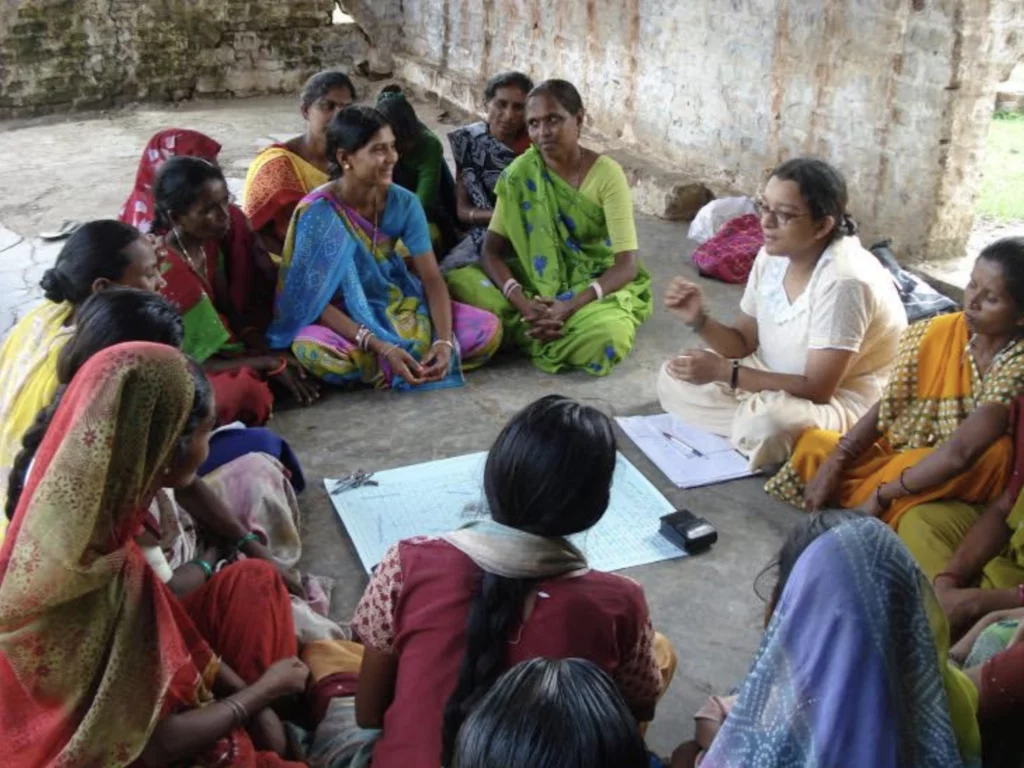
Working Paper
How Recife responded to the challenge of learning deficit...
May 12th 2025
School closures during COVID-19 caused learning losses worldwide, often compoundin...
Read MoreIn India, approximately 220 million people live in poverty in rural areas.[1] Despite promising GDP growth over the last several years, rural poverty continues to be considered one of the largest and most intractable problems facing the country. At the same time, however, the vast number of rural poor seeking increased productivity, employment, and enhanced livelihoods also presents an opportunity.
Self-Help Groups (SHGs) have gained considerable traction and scale in India as a grassroots model for improving the livelihoods of India’s rural poor. SHGs are cooperative business associations of low-income people which benefit from shared sourcing, training, capital, and business linkages. Groups normally consist of around 15 members, meet regularly, and establish communal business empowerment activities such as group savings, lending, record keeping, and training in productive trades. They have become hubs of service delivery for NGOs and government welfare schemes.

SHGs themselves are microbusinesses: they have a management structure, they manage costs, revenues, and cash flows, and they keep audited records of their books. They are small engines for economic activity within villages. While the Federations that formulate and unite SHGs are typically non-profit entities, they act somewhat like holding companies for these many micro-businesses, providing overall structure, capacity, advocacy, and access to partnerships. Federations are also increasingly operating like hybrid non-profit/for-profit businesses, as many have established carve-out for-profit branches; and some are even considering becoming wholly for-profit social enterprises. Given the increasing scale, prominence, and business-mindedness of SHG Federations, it is natural to explore: is impact investing an effective means of growing and deepening SHG Federations’ impact?
“Impact investment” has been flowing into SHGs for years, even though it has not historically been called or considered impact investment. In the early 2000s, the World Bank helped to set up a Community Investment Fund of approximately $150 million in debt capital that was mainly used to support the lending activities of microfinance institutions that served SHGs. This had a catalytic effect on the industry: soon after the returns were validated and a demonstration effect was established, large commercial banks also began serving SHGs and several hundred million dollars more flowed into the market.[2], [3] The movement of SHGs has proliferated to massive scale: the number of SHG borrowers in India is now estimated to be 33 million, which make up approximately 2.2 million groups.[4] The total addressable market for lending is clearly large; now the question remains – are there additional impact investing models that can capitalize on this trend, and help grow the opportunity for SHGs to an even larger and more transformative scale?
SHG federations increasingly have been establishing adjunct commercial enterprises that link SHG members’ income-producing activities to larger and more formal markets. These commercial enterprises tend to focus on agriculture and garments/handicrafts (as these industries are most easily served by rural poor as suppliers). The enterprises typically purchase and aggregate products or raw materials produced by SHG members, process these products/raw materials into value-added final products, and then sell the final products to commercial clients. The pull-effect on demand creates a much greater market opportunity for SHG member-suppliers than they would have by selling these products in local markets. This also enables them to sell in higher quantities and produce products in higher-value segments, which earn a greater margin. While the overarching business models of these SHG-fueled commercial enterprises often make sense on the surface, running them is often a complicated endeavor, involving a difficult tightrope walk between social impact and commercial success. The enterprises rely on a unique breed of management that understands both the nuances of running a competitive commercial entity and the importance of delivering value down the chain to suppliers. Not least of all, these enterprises have unique capital needs. For the right business models and right teams, impact investing may be a potential way to service these capital needs, and promote both financial success and social impact.
To illustrate some of these dynamics, consider the example of Maitree Dairy in Rajasthan. Maitree Dairy was founded by a SHG Federation called SRIJAN (Self-Reliant Initiatives through Joint Action Network) and its mission to provide a commercial means of enhancing the livelihoods of over 2,000 local SHG members that are dairy farmers. Maitree aggregates members’ milk at collection points, chills it, processes some of it into higher-value products like cheese and ghee, packages and brands the products, and sells them to individual and commercial clients in the surrounding region. Maitree’s commercial operation allows SHG members to earn additional income of Rs. 14,000 per year.[5] While it has established itself as a viable small/medium enterprise outside of Jaipur, Maitree is currently struggling to find the right kind of capital it needs to scale. For example, in order to serve higher-value customers and more effectively manage both supply and demand, the company needs to purchase a milk pasteurizer (a cost of approximately $125,000). The interest charged on a commercial bank loan or make traditional asset financing out of reach, and SRIJAN has been unable to attract grant capital for this particular project. Maitree’s mission to generate maximum profits to SHG member-suppliers also cause traditional venture investors to look upon this opportunity unfavorably, as this intention poses a clear risk to profit maximization. If impact investing is a potential solution to Maitree’s capital constraints and the constraints of similar enterprises, then impact investors must be tolerant of a significant amount of risk, and aligned on both the business strategy and social mission.[6]
The impact investing space has been growing and maturing in India and around the world. The number of investors familiar with these difficult questions and willing to take on this risk is growing. Consider Root Capital, for example. Root Capital’s bread-and-butter investment model is providing debt products to agricultural cooperatives that would otherwise only have access to very expensive commercial credit. Root Capital provides both short-term trade credit loans and long-term fixed-asset loans for things like processing equipment. They take non-traditional forms of collateral (like purchase orders) and provide terms that work for enterprises that need this flexibility. While Root Capital doesn’t currently work in India, there is an opportunity to extend to a new region this model which has worked well in East and West Africa and Latin America. The homegrown impact investing ecosystem within India could also be a strong player in supporting SHG enterprises. For example, funds like Aavishkaar could contribute their deep networks and brand recognition to expand business development efforts.
The growth of SHGs in India is a powerful testament to the potential of the rural poor in forming businesses and charting their own route out of poverty. To take this work to the next level, SHGs need to be able to access commercial markets, and many are already doing so as members of commercial supply chains. The success of the rural poor depends on the success of these enterprises. A carefully crafted impact investing model has the potential to infuse these businesses with the right kind of capital, management influence, and business rigor needed to become scaled successes, and engines for economic prosperity for the rural poor.
[1] “India.” Rural Poverty Portal. N.p., n.d. Web. 23 Feb. 2016. <http://www.ruralpovertyportal.org/country/statistics /tags/india>.
[2] Deshmukh-Ranadive, Joy. “Women’s Self-Help Groups in Andhra Pradesh – Participatory Poverty Alleviation in Action.” Reducing Poverty, Sustaining Growth: Scaling up Poverty Reduction: A Global Learning Process and Conference in Shanghai, May 25-27, 2004. Washington, D.C.: World Bank Institute, World Bank, 2004.
[3] Shah, Parmesh. “Scaling Up Self Help Groups In India and Adapting to International Context.” Guest Lecture. Harvard Kennedy School, Cambridge, Massachusetts. 5 Nov. 2015. Lecture.
[4] EDA and APMAS Self-Help Groups in India: A Study of the Lights and Shades, CARE, CRS, USAID and GTZ, 2006, p. 11
[5] “Dairy | Srijan India (Self-Reliant Initiatives through Joint Action).” SRIJAN Dairy. Self Reliant Initiatives through Joint Action, n.d. Web. 22 Feb. 2016. <http://srijanindia.org/dairy/>.
[6] Site Visit to Maitree Dairy. IMAGO Global Grassroots. Personal interview. 17 Dec. 2015.